A K Bhattacharya
The finance minister today grapples with the same fiscal worries of two decades ago
Twenty years ago, Manmohan Singh as finance minister had presented what is commonly regarded as India's first reforms Budget.
Two decades later, how different have the finance ministry's concerns and preoccupations been? There are two ways of assessing it.
One way is to compare the key Budget numbers then with those that will confront Finance Minister Pranab Mukherjee as he prepares to present the Budget for 2011-12 next month.
. . .
India's fiscal worries: No change in 20 years
Image: Prime Minister Manmohan Singh.Photographs: Reuters
The second way would be to compare the key fiscal policy concerns then with those that the finance ministry wrestles with now.
In 1991-92, Manmohan Singh reduced the fiscal deficit to 5.8 per cent of gross domestic product, from a much higher level of 8.4 per cent in the previous year.
Twenty years later, little has changed, though Pranab Mukherjee would consider it a success if he reduced the fiscal deficit for 2010-11 to the targeted 5.5 per cent of gross domestic product.
To be fair to the government, its fiscal deficit story would have looked much better, but for the global financial crisis of 2008.
It was forced to announce generous doses of stimulus measures, dealing a body blow to its fiscal deficit reduction programme.
. . .
India's fiscal worries: No change in 20 years
The government's fiscal deficit fell to 2.7 per cent of GDP in 2007-08, before ballooning to 6 per cent in the following year and to 6.8 per cent in 2009-10.
All this was largely because of a combination of duty cuts, leading to revenue loss, and increased expenditure under various heads, many of them were questionable from the fiscal prudence point of view.
On the tax revenue front, the government's effort has remained roughly the same -- it was 10.3 per cent of GDP in 1991-92, 10.27 per cent in 2009-10 and 10.7 per cent in 2010-11 (Budget estimates).
There was a spike in 2007-08 with the government's total tax revenues amounting to over 12 per cent of gross domestic product.
The real change on the tax revenue front, however, shows in its composition.
. . .
India's fiscal worries: No change in 20 years
Direct tax revenue mobilisation was 2.33 per cent of GDP in 1991-92 and it is now over six per cent.
In the same way, indirect tax revenue as a percentage of GDP has declined from around eight per cent 20 years ago to less than five per cent now.
That is a big change indeed and shows the nature and quality of the tax reforms that successive finance ministers brought about.
In sharp contrast, however, is the government's poor performance on the subsidy front. In 1991-92, Manmohan Singh had brought the government's subsidy expenditure down to 1.8 per cent of GDP, from 2.14 per cent a year ago.
In 2008-09, subsidies went up to a record level of 2.44 per cent of GDP and declined marginally to 1.9 per cent in 2009-10.
. . .
India's fiscal worries: No change in 20 years
Image: Finance Minister Pranab Mukherjee.Photographs: B Mathur/Reuters
The Budget estimate for 2010-11 is a little lower at around 1.68 per cent, but what it shows is that successive governments have failed to make a major impact on subsidies.
An even bigger problem affects the government's expenditure pattern in this period. Pranab Mukherjee took pride in announcing how the central government's total expenditure had crossed the Rs 10 lakh crore- (Rs 1 trillion-) mark in 2009-10.
However, within that rising expenditure, the share of the government's capital expenses has fallen steadily -- they are down from 4.46 per cent of GDP in 1991-92 to less than two per cent in 2009-10.
The trend has not changed significantly even in the Budget estimates for 2010-11.
What about the key fiscal policy concerns then and now?
. . .
India's fiscal worries: No change in 20 years
In 1991-92, the big task for Manmohan Singh was to reform taxes and reprioritise the government's expenditure programme to make it more lean, efficient and effective.
Over the years, the Budgets have streamlined the tax policy and made it more stable and reasonably low, even though little progress has been made in plugging leakages or removing exemptions.
The big change has been the lack of surprise element in Budgets over the tax rates.
Once the direct taxes code and the goods and services tax regime are in place, hopefully in the next couple of years, whatever surprise element that remains in the government's tax rates would disappear.
That, however, cannot be said of the government's expenditure programme.
The concerns that prevailed then dog the government of today, like subsidies for a host of commodities including fertilisers and petroleum products.
. . .
India's fiscal worries: No change in 20 years
Image: The Indian Parliament.Photographs: Courtesy: rajyasabha.nic.in
The threat of a rising fiscal deficit, and more importantly of the revenue deficit, continues to be a big challenge.
Tax reforms may have made some headway, but the big question now is whether there is need for a fundamental change in the scope of taxation or growth alone can take care of sustained revenue mobilisation to meet the government's rising expenditure needs, largely because of subsidies and the rising pressure of new rights and entitlement laws on its finances.
There is also the additional problem of higher government debt and interest payment liability that squeezes the finance minister's flexibility in allocating resources to sectors that need greater attention.
Twenty years have gone by, but it seems the finance minister of today is grappling with the same sort of fiscal worries -- as formidable and challenging as those that confronted Manmohan Singh as finance minister then.

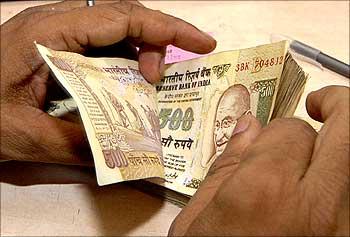
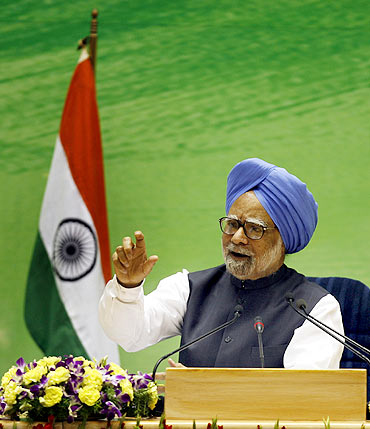
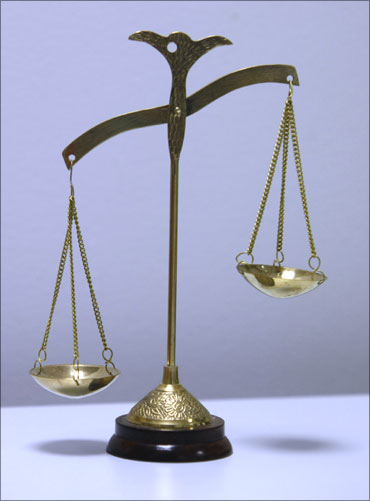

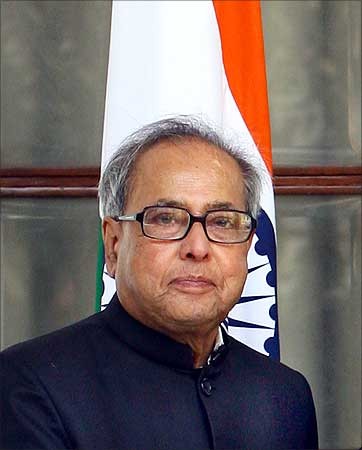

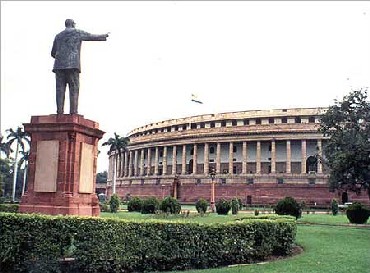

article